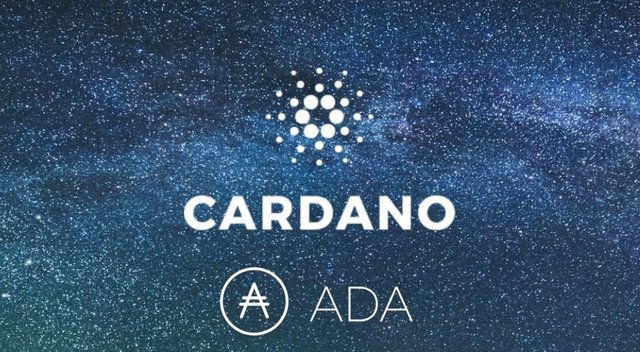[ADA] Cardano - An Extensive Analysis Of Why It Is Good To Have Cardano In Your Portfolio (Part 1)
Hello fellow Steemians!
I have prepared an extensive analysis of coin cardano for you. On one article it would be very long so I will divide it into several parts. PART 1.
Contents
Part 1:
- technological layers of Cardano
- how does it work
- solving the problem
- architecture
Part 2:
- community approach
- utilization
- economic model
- roadmap
Part 3:
- white paper
- team
- future, ideas and opinions
- conclusion
Cardano seeks to create a self-evolving financial ecosystem. Cardano will be a smart-blockchain contract with native cryptocurrency ADA. Cardano is counted in the so-called third generation blockchains, which entails a requirement for the ability to easily scale the system with an increasing number of users.
Two layers of Cardano technology
The first layer (transactional or accounting) will serve to transfer the value (it will do the same thing as Bitcoin). In particular, it will take care of fast transactions, for which basic information such as sender's address, quantity, recipient address, etc. is sufficient. It will be possible to create new tokens on this layer.
The second layer will be operational (computational) that will serve everything else that can be done on the transaction. It will deal with transaction terms, deadlines, reasons, etc. This layer will work with smart contracts and metadata.
With the idea of adding some computational logic to transactions, the first Ethereum and its smart contracts came. Ethereum has only one layer from Cardano's perspective. Blocks everything about the transaction, including any smart contracts and metadata. This has a negative effect on block size, charges, and transaction speeds.
On the second layer of Cardano, you can build a comprehensive financial system that can use a lot of additional transaction information. Only the metadata that will be needed from a business perspective will be stored.
The biggest benefits of the two layers are that the system can be scaled more efficiently. The added node can only serve the first or second layer as needed. It will also be easier to upgrade the system.
How does it work?
Cardano is working on his own delegated Proof of Stake (dPoS) protocol called Ouroboros. Ouroboros will be used on both layers of Cardano. In the first one he will send the transaction, the other will implement smart contracts. The team assumes that it will be mathematically proven to be safe. In addition to IOHK, several universities from around the world (UK, USA, Japan) participate in the work. ADA Holders will be able to choose a node to verify the blocks. The transaction verification reward will not only be given to nodes but also to those who voted for their election (as they can "stack" their coins and thus increase their chances of being elected).
The first deployment of Ouroboros and the choice of verifying nodes is planned for Q2 2018, soon. Currently, Cardano is centralized and all nodes are in the possession of the project. Currently, you can register if you want to run your own Cardano authentication node.
Problem solving
Cardano wants to solve today's most burning problem of cryptocurrenices, namely scalability. For most of today's blockchains, adding a new node to a network does not mean that the network can handle multiple users. Adding means that you need to send more messages to your consensus. This makes the network safer, but performance will not help.
Cardano wants to solve this problem especially through its Ouroboros, which will allow for a certain period of time (epoch) to choose several quorum nodes that will keep the Ledger. If multiple scaling is needed, more node quorums are paralleled to process blocks in sidechains.
Additionally, Cardano will support sharding, which will allow splitting the blockchain into smaller parts that work in parallel. This will probably be Cardano at the end of 2018 or later in the year 2019. The advantage is that Ouroboros will allow easy insertion and testing of changes without the need for hard forks.
Technology will support sidechains through a protocol called KMZ sidechains (abbreviated to reflect the names of the authors). It will be possible to move coins from the transaction layer to any computing layer or to another blockchain that will support the KMZ protocol.
Architecture
The technology also anticipates that the cryptographic standards are outdated and evolving, so they anticipate their exchange in advance, possibly through a soft fork. They plan to add support for quantum resistance.
Interestingly, the team decided to use the Haskell programming language for implementation. Haskell is a functional programming language that makes it easier to verify that the code is doing exactly what is expected of it, and thus eliminates human errors compared to competitors (C ++, Java, etc.).
Cardano plans to create its own language for writing smart contracts called Plutus - which will be inspired by Haskel and will also be functional. However, they plan to promote more common languages.
......
Part 2 will continue later!


Great Post! Get Free Upvotes ! http://ity.im/CxSMf
Coins mentioned in post: